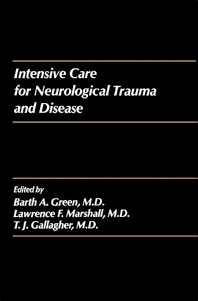Books in Life sciences
Books in Life sciences
- 1st Edition
- Volume 19
- October 22, 2013
- E.R. Braithwaite + 1 more
- English
- eBook9 7 8 1 4 8 3 2 9 0 8 9 8

Molybdenum
- 1st Edition
- October 22, 2013
- Wayland J. Hayes Jr.
- English
- eBook9 7 8 1 4 8 3 2 8 8 6 3 5

Classes of Pesticides
- 1st Edition
- Volume 18
- October 22, 2013
- Bernard Testa
- English
- eBook9 7 8 1 4 8 3 2 8 7 9 8 0

Advances in Drug Research
- 2nd Edition
- October 22, 2013
- Larissa Bailey + 1 more
- English
- eBook9 7 8 1 4 8 3 2 8 8 0 9 3

Honey Bee Pathology
- 1st Edition
- October 22, 2013
- M. A. Epstein
- English
- Paperback9 7 8 1 4 8 3 1 7 9 2 2 3
- eBook9 7 8 1 4 8 3 1 9 5 0 3 2

International Review of Connective Tissue Research
- 1st Edition
- October 22, 2013
- LAURENCE R. WEATHERLEY
- English
- eBook9 7 8 1 4 8 3 2 9 2 1 0 6

Engineering Processes for Bioseparations
- 1st Edition
- October 22, 2013
- Chester S. Ho
- English
- eBook9 7 8 1 4 8 3 2 8 9 4 7 2

Animal Cell Bioreactors
- 1st Edition
- October 22, 2013
- Lucien Dautrebande
- English
- Hardback9 7 8 1 4 8 3 2 2 8 5 2 5
- Paperback9 7 8 1 4 8 3 2 5 1 7 7 6
- eBook9 7 8 1 4 8 3 2 6 1 5 4 6

Micro Aerosol
- 1st Edition
- October 22, 2013
- Barth A. Green + 2 more
- English
- Hardback9 7 8 0 1 2 7 8 8 2 8 4 0
- Paperback9 7 8 1 4 8 3 2 4 8 9 6 7
- eBook9 7 8 1 4 8 3 2 7 3 7 1 6

Intensive Care for Neurological Trauma and Disease
- 1st Edition
- October 22, 2013
- William J. L. Felts + 1 more
- English
- Paperback9 7 8 1 4 8 3 2 1 1 3 8 1
- Hardback9 7 8 1 4 8 3 1 9 9 7 8 8
- eBook9 7 8 1 4 8 3 2 2 4 8 1 7

International Review of General and Experimental Zoology